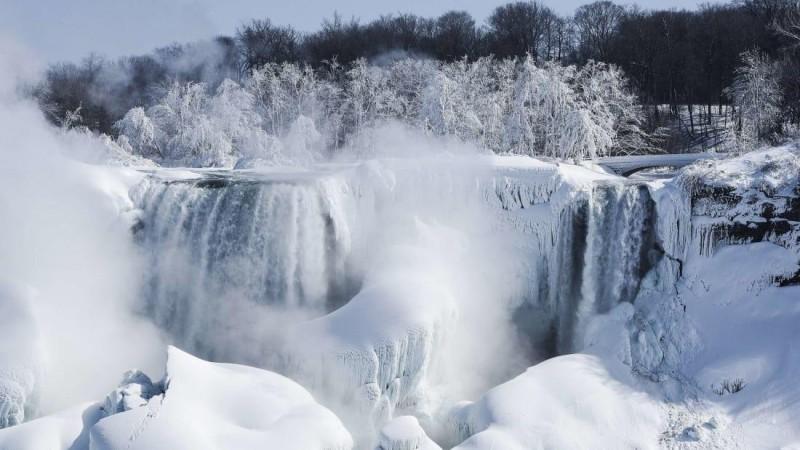Temperatures plunged across North America in February 2021, causing the falls on both sides of the United States-Canada border to partially freeze over. Thick ice formations coated the iconic waterfall over the weekend.
Niagara Falls is a powerful force of nature
Temperatures fell to -2F (-18C) in Niagara, New York State, last week, tourists gathered to witness the ice which had formed at the top of the famous waterfall over the weekend and on Monday.

Despite the amount of ice covering the falls, the water didn't stop flowing completely. The volume and force of the water is too great to ever freeze solid, even at extremely low temperatures.
The Niagara Falls have only stopped flowing once in history, and that was due to ice from Lake Eerie clogging the mouth of the river in the 1960s, but steel ice booms were installed upriver to prevent it happening again.

Ice forms on the waterfall every year but widespread freezing occurs after a sustained period of cold temperatures, according to Niagara Falls management. Thick chunks of ice were seen floating in the water, as clouds of steam and a rainbow were visible throughout the day. Spectators were treated to an incredible sight when a rainbow appeared over the frozen landmark.
The images also showed large areas of untouched snow around the banks of the waterfall, as the iconic landmark became its own winter wonderland amid the cold weather. The scene looked like something out of a winter fairytale.
Last time Niagara Falls was covered in similar snow wrap was in 2017 when 22 inches of snow fell, engulfing the falls and surrounding areas in thick ice.Alongside many states across the US over the last two weeks, New York has been the most hit with a volume of snowfall that is more than expected.

















